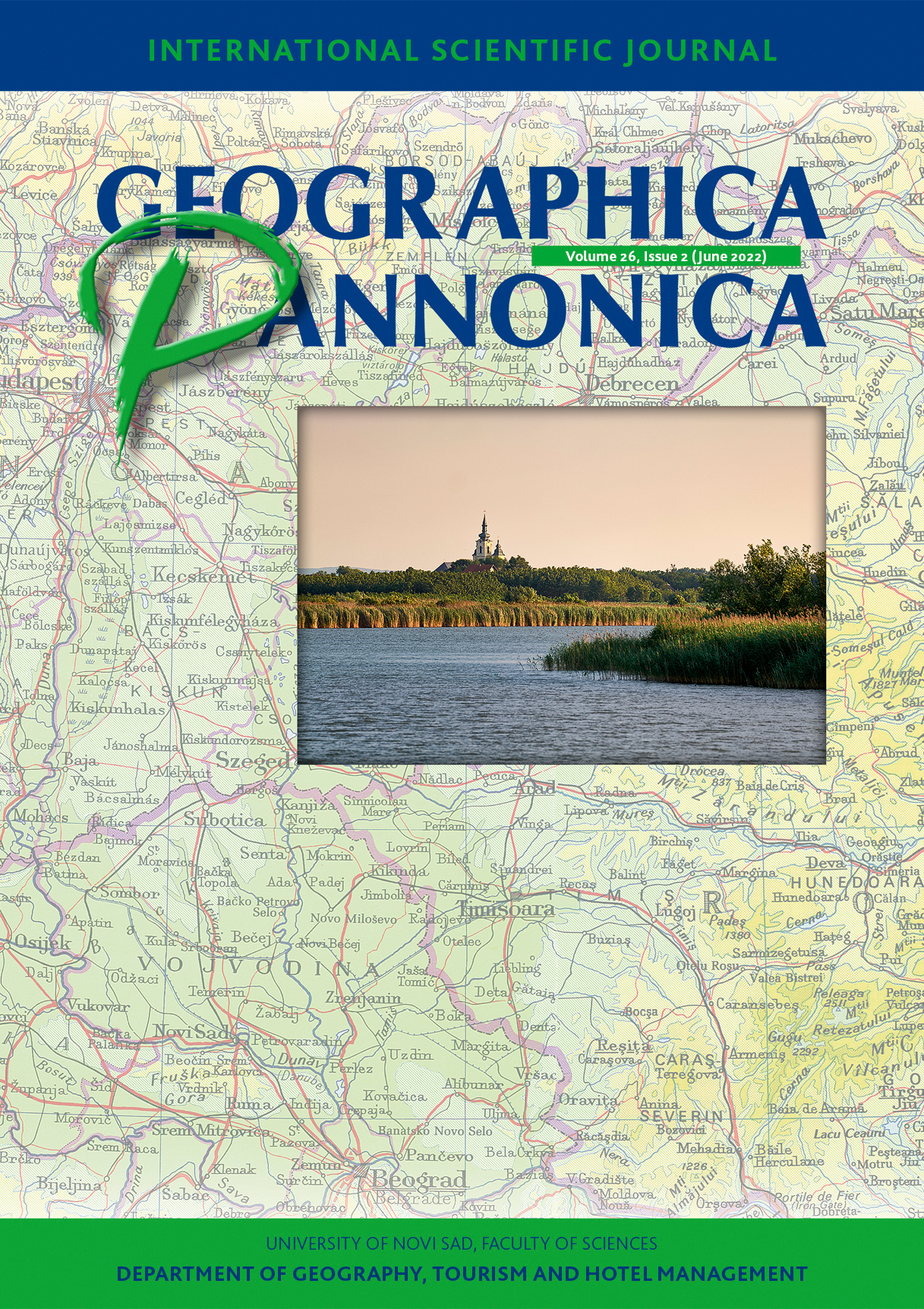An example of the adverse impacts of various anthropogenic activities on aquatic bodies: Water quality assessment of the Provadiyska River (Northeastern Bulgaria)
Abstract
Anthropogenic activities deteriorate the quality of water resources, which reduces their socio-economic suitability, endangers public health, and affects aquatic life. This work presents the results of physicochemical monitoring of the Provadiyska River (Northeastern Bulgaria) and aims to assess water quality status according to the guidelines pointed out in the National regulatory standard – Regulation H-4/2012 for characterization of the surface waters. The selected river has become one of the most seriously polluted streams in the territory of the country due to the effect of various human practices occurring in the drainage basin, such as agriculture, industry, and urban development. Data about the values of ten physicochemical variables (pH, EC, DO2, N-NH4, N-NO3, N-NO2, N-tot, P-PO4, P-tot, and BOD5), recorded at four measuring points during the period 2015–2020 have been used. Results obtained indicate that almost all of the parameters considered do not meet the reference norm for “Good status”, thus water quality could be assessed as “Moderate”. Failed variables appear to be EC, N-NH4, N-NO3, N-NO2, N-tot, P-PO4, P-tot, and BOD5 whose highest observed content remains from two up to nine times above the maximum permissible limits of Regulation H-4/2012. Water contamination arises from different sources and activities, including the excessive fertilization of croplands, the unregulated release of animal manure from livestock farms, the uncontrolled discharge of municipal and industrial effluents into the river, etc. The expansion of sewerage systems in the settlements, the construction of wastewater treatment facilities, as well as the adoption of codes for best farming practices are among the most important actions that should be taken to reduce the deleterious effects of various anthropogenic activities on water quality.
References
Chislock, M. F., Doster, E., Zitomer, R. A., Wilson, A. (2013). Eutrophication: Causes, consequences, and controls in aquatic ecosystems. – Nature Education Knowledge, 4, 4–10.
Dodds, W. K., Smith, V. H. (2016). Nitrogen, phosphorus, and eutophication in steams. – Inland Waters, 6(2), 155–164.
Gartsiyanova, K. (2016). Nitrate pollution of the river water in the Black Sea drainage basin. – Problems of Geography, 1/2, 47–57 (in Bulgarian).
Hristova, N. (2012). Hydrology of Bulgaria. – B: Tip Top Press, pp. 832.
Kernebeek, H., Oosting, S. J., Van Ittersum, M. K., Bikker, P., Boer, I. (2016). Saving land to feed a growing population: consequences for consumption of crop and livestock products. – The International Journal of Life Cycle Assessment, 21, 677–687, doi: 10.1007/s11367-015-0923-6.
Mills, F., Willetts, J., Petterson, S., Mitchell, C., Norman, G. (2018). Faecal pathogen flows and their public health risks in urban environments: a proposed approach to inform sanitation planning. – Internation Journal of Environmental Research and Public Health, 15(2):181, doi: 10.3390/ijerph15020181.
Mohammadi, A. A., Zarei, A., Majidi, S., Ghaderpoury, A., Hashempour, Y., Saghi, M. H., Alinejad, A., Yousefi, M., Hosseingholizadeh, N., Ghaderpoori, M. (2019). Carcinogenic and non-carcinogenic health risk assessment of heavy metals in drinking water of Khorramabad, Iran. – MethodsX, 6, 1642–1651, doi: 10.1016/j.mex.2019.07.017.
Nazemi, K., Salari, S., Eskandani, M. A. (2018). Assessment of the Escherichia coli pollution in drinking water and water sources in Sistan, Iran. – Water Reuse, 8(3), 386–392.
Ravindra, K., Mor, S. (2019). Distribution and health risk assessment of arsenic and selected heavy metals in groundwater of Chandigarh, India. – Environmental Pollution, 250, 820–830, doi: 10.1016/j.envpol.2019.03.080.
Romanelli, A., Soto, D. X., Matiatos, I., Martinez, D. E., Esquius, S. (2020). A biological and nitrate isotopic assessment framework to understand eutrophication in aquatic ecosystems. – Science of the Total Environment, 715:136909, doi: 10.1016/j.scitotenv.2020.136909.
Sall, M. L., Diaw, A. K., Gningue-Sall, D., Aaron, S. E., Aaron, J. J. (2020). Toxic heavy metals: impact on the environment and human health, and treatment with conducting organic polymers, a review. – Environmental Science and Pollution Research, 27, 29927–29942, doi: 10.1007/s11356-020-09354-3.
Vilmin, L., Flipo, N., Escoffier, N., Groleau, A. (2018). Estimation of the water quality of a large urbanized river as defined by the European WFD: what is the optimal sampling frequency? – Environmental Science and Pollution Research, 25, 23485–23501, doi: 10.1007/s11356-016-7109-z.
x x x Directive 2000/60/EC of the European Parliament and of the Council of 23 October 2000 establishing a framework for Community action in the field of water policy.
x x x Directive 91/271/EEC of the European Parliament and of the Council on 21 May 1991 concerning the collection, treatment, and discharge of the wastewaters released from urban areas and certain industrial sectors.
x x x Executive Environment Agency: Annual bulletins (2000–2018) concerning ecological status of the surface waters in the Black Sea region: www.eea.government.bg/.
x x x Regulation H-4 of 14 September 2012 for characterization of the surface waters.

